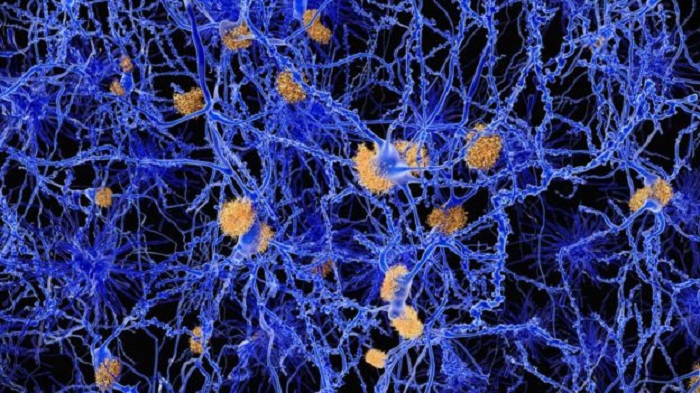The perfect rate of flashes was 40 per second - a barely perceptible flicker, four times as fast as a disco strobe.
The researchers say the approach should be tested in humans.
They are already seeking permission from the US regulator, the Food and Drugs Administration, and have set up a commercial company to develop the technology.
Sticky plaques
Build-up of beta amyloid protein is one of the earliest changes seen in the brain in Alzheimer`s disease.
It clumps together to form sticky plaques and is thought to cause nerve cell death and memory loss.
Researchers have been looking for ways to prevent plaque formation using drugs, but the results have been disappointing.

Amyloid plaques are a hallmark of Alzheimer`s disease
But Dr Li-Huei Tsai and colleagues at the Massachusetts Institute of Technology think they have found another way, using light.
The mice that they studied were genetically engineered to have Alzheimer`s-type damage in their brain, Nature journal reports.
When the mice were put in front of the flashing light for an hour, it led to a noticeable reduction in beta amyloid over the next 12 to 24 hours in the parts of the brain that handle vision.
Doing this every day for a week led to even greater reductions.
Likewise, light stimulation direct to the part of the brain that deals with memory - the hippocampus - led to reductions of beta amyloid there.
The researchers say the light works by recruiting the help of resident immune cells called microglia.
Microglia are scavengers. They eat and clear harmful or threatening pathogens - in this instance, beta amyloid.
It is hoped that clearing beta amyloid and stopping more plaques from forming could halt Alzheimer`s and its symptoms.
Dr Tsai said: "We are optimistic."
The scientists say, in the future, people could wear special goggles or sit in front of a light-emitting device to get a therapeutic dose of the strobe light.
For the patient, it should be entirely painless and non-invasive.
"We can use a very low intensity, very ambient soft light.
"You can hardly see the flicker itself.
"The set-up is not offensive at all," they said, stressing it should be safe and would not trigger epilepsy in people who were susceptible.
Dr David Reynolds, of Alzheimer`s Research, UK said: "Studies like this are valuable in revealing new processes implicated in Alzheimer`s disease and opening new avenues for further research.
"While mice used in this study showed some key features of Alzheimer`s, it is always important to follow up these findings in people."
















































